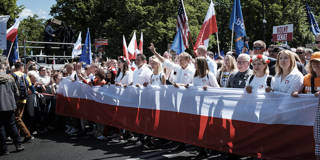The View from Poland
As the war in neighboring Ukraine continues into its second year, emotions are running high in Polish political life. Given major domestic political and social developments, including a general election in the fall, as well as broader geopolitical realignments, 2023 is shaping up to be a watershed year.
Since Russia’s full-scale invasion of Ukraine in February 2022, Poland, the European Union’s largest front-line state, has come in from the cold. Criticism of the populist right-wing government’s anti-democratic behavior, including its politicization of the judiciary and public media, has largely fallen by the wayside, owing to Poland’s centrality to the logistics of channeling Western weapons and other military support to Ukraine. But while the ruling Law and Justice party has capitalized on this role to insulate itself from EU pressure, its efforts to tighten its grip on power may force a domestic reckoning.
Irena Grudzińska Gross: Much is happening in Poland these days. For starters, the government is launching a commission to investigate “Russian influence” ahead of this fall’s general election, in what many see as a direct effort to disqualify opposition leader Donald Tusk. In response, all the democratic opposition parties, as well as hundreds of thousands of Poles, came out to protest the “Tusk Law” on June 4. Can we expect these groups to unite before the election?
Adam Michnik: Yes, everyone who took part felt that it was the biggest demonstration they had joined since the beginning of 1989 – that is, since the end of communism in Poland. The ruling, Law and Justice (PiS) party wants to create a body modeled after the House Un-American Activities Committee and the 1950-54 McCarthy hearings in the United States – only its version is even more primitive and barbaric. Indeed, it is reminiscent of the fascists’ or Bolsheviks’ methods in the 1930s.
But while the demonstration was a show of support for the alliance of democratic parties, a common electoral list is unlikely to be agreed upon. The idea is that regardless of who garners the most support – be it Tusk’s Civic Platform, Szymon Hołownia’s coalition with the Polish People’s Party (PSL), or the so-called Left – all will vote to form a government with the others. In this sense, it was a demonstration of unity in diversity.
